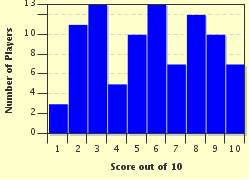Quiz Answer Key and Fun Facts
1. The most famous simple sugar is glucose (pictured), whose chemical formula is C6H12O6 and can polymerise to form carbohydrates. What is the empirical formula of all carbohydrates?
2. Sugars can be categorised either as aldoses or ketoses. Which functional group is present in both aldoses and ketoses?
3. Table sugar is a disaccharide made up of glucose and fructose. Which of these statements is true?
4. Optical isomerism occurs when a molecule has a chiral carbon (i.e. a carbon attached to four different groups). The arrangement of groups about this chiral carbon determines whether the isomer is a D-isomer or an L-isomer. However, some sugars have several chiral carbons. How do we decide which chiral carbon determines which optical isomer the sugar is?
5. The arrangement of -OH and -H groups about the carbons in sugars can vary, giving rise to special types of isomers called epimers. If an aldose and a ketose were to have identical chemical formulae, which one would be able to exist in a greater number of epimers?
6. In solution, sugars exist in equilibrium between open-chain and closed-chain conformations. What term is used to describe the groups formed upon this cyclization?
7. Upon cyclisation, there arises a new type of isomer. These isomers are called anomers and they differ only in whether the -OH group (circled) is above or below the plane of the sugar ring of glucose. What two terms are used to describe these anomers?
8. Glucose tends to form six-membered rings which are called pyranoses. Fructose, on the other hand, exists more stably as a five-membered ring. What name is given to this type of ring?
9. As well as glucose existing as different anomers when in its cyclic form, it can also have one of two conformations. One of these is less stable and is called the boat conformation (pictured left). What is the name of the second, more stable conformation (pictured right)?
10. Two sugars can become covalently linked in a process known as a condensation reaction. What type of bond results from this condensation reaction?
Source: Author
doublemm
This quiz was reviewed by FunTrivia editor
rossian before going online.
Any errors found in FunTrivia content are routinely corrected through our feedback system.


